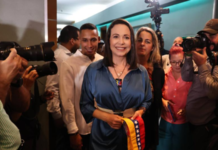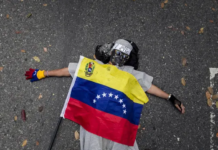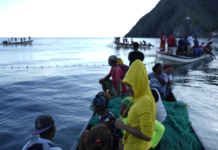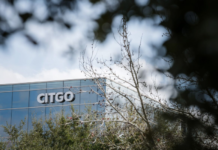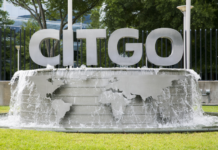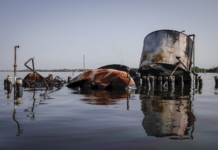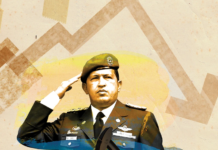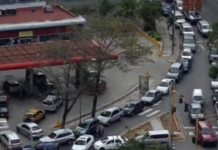[ad_1]
He towered over his Caribbean island for nearly five decades, a shaggy-bearded figure in combat fatigues whose long shadow spread across Latin America and the world.
Late Friday night, Raúl Castro announced that his brother Fidel Castro died. He was 90.
Millions cheered Fidel Castro on the day he entered Havana. Millions more fled the communist dictator’s repressive police state, leaving behind their possessions, their families, the island they loved and often their very lives. It’s part of the paradox of Castro that many people belonged to both groups.
Few national leaders have inspired such intense loyalty – or such a wrenching feeling of betrayal. Few fired the hearts of the world’s restless youth as Castro did when he was young, and few seemed so irrelevant as Castro when he was old – the last communist, railing on the empty, decrepit street corner that Cuba became under his rule.
He held a unique place among the world’s leaders of the past century. Others had greater impact or won more respect. But none combined his dynamic personality, his decades in power, his profound effect on his own country and his provocative role in international affairs.
As he changed the face of Cuba, he remapped South Florida as well, transforming it from the southernmost tip of the United States to the northernmost point of Latin America. The suffering of the refugees he sent pouring into Miami eventually turned to triumph as they forged economic and political success.
He was a spellbinding orator who was also a man of action. His tall and powerful build was matched by an outsized ego, boundless energy and extraordinary luck that carried him to victory as a guerrilla leader in 1959 against nearly impossible odds, then helped him survive countless plots hatched by his countless enemies.
He ended American domination of the island’s economy, swept away the old political system and the traditional army, nationalized large and small land holdings and brought reforms in education and healthcare.
He also was a ruthless dictator, the Maximum Leader who reneged on his promise of free elections, executed thousands of opponents, imprisoned tens of thousands, installed a Communist regime and made his island a pawn in the Cold War. His alliance with the Soviet Union brought the world to the brink of nuclear war in 1962.
The Cuban Missile Crisis was neither Castro’s first nor last confrontation with the United States, though it was certainly the most epic. No other individual has ever tormented Washington more or longer. At age 12, Castro wrote to Franklin Delano Roosevelt, congratulating him on his third inauguration as president and impudently asking for a dollar. By the time he was 35, two American presidents had devoted a considerable amount of time and effort to killing him.
Over and over, whether by arming Latin American revolutionaries or sheltering fugitives from U.S. justice or unleashing great waves of refugees, Castro enraged his great enemy to the north — and often threw it into domestic disarray as well. The U.S. political controversies that followed the 1980 Mariel boatlift and the 2000 custody battle over Elián González played a large role in costing first Jimmy Carter and then Al Gore the presidency.
Faced with hostility from the United States, which sponsored an invasion by Cuban exiles in 1961 and relentlessly (if sometimes comically) plotted his assassination, Castro turned the island into a fortress guarded by one of the region’s most powerful military machines.
But the guns pointed inward, too. He created a repressive state that rigidly controlled the arts, the press, the airwaves. An efficient secret police force was aided by neighborhood spies and pro-government mobs that attacked those who dared to call for democratic change. Cultural enemies were vulnerable, too; well into the 1970s, Castro was imprisoning gays and long-haired young people in work camps.
Castro bragged that he would free his island of economic dependence on the United States, and he did – but only by becoming even more dependent on another foreign power based nearly 6,000 miles away in Moscow. Cuba ran up billions of dollars in debt for weapons, oil, machinery, food and other supplies. And when the Soviet Union collapsed in 1991, Cuba’s crippled economy imploded, bringing new hardships to a population that already had suffered decades under his mismanagement.
Hundreds of thousands fled the society Castro created. The exodus began early with the powerful and affluent and continued with former comrades who found themselves in opposition to his rule. Next to go were the middle class and professionals and, finally, just about anyone who had the courage to grab a boat or cobble together a raft for the perilous crossing of the Florida Straits.
Castro, although always controversial, once seemed to embody a fresh, youthful approach to his island’s conflicts. Few moments in Cuban history rival the euphoria of Jan. 8, 1959, when the black-bearded comandante rode a tank into Havana with his swaggering rebel fighters, making their way through streets filled with cheering throngs. President Fulgencio Batista had fled a week earlier.
To his followers — and admirers around the world — Castro offered a vision of liberation, morality and enlightenment. Many believed his promise of a “humanistic” revolution based on nationalism — not communism — with agrarian reform, free elections and the restoration of the liberal 1940 constitution.
For millions of Cubans, hope turned to bitter feelings of betrayal as Castro quickly pushed aside former comrades in arms, jailed those who protested, ridiculed the idea of elections and converted Cuba to a one-party Communist state and Soviet satellite. He then proclaimed that he had been a Marxist-Leninist all along.
If his open embrace of communism made him a pariah not only to Washington but to many of his own countrymen, Castro nonetheless became an icon to young leftists around the world disillusioned with the revolutionary sclerosis of the Soviet Union. Hundreds of thousands would give their lives in fruitless guerrilla movements he inspired in places like El Salvador, Nicaragua, Guatemala, Colombia, Peru, Uruguay, Argentina, Chile, Namibia, Angola and Zaire.
In his final years, Castro seemed curiously unconcerned with his image, at times lurching dangerously close to self-parody. Miami Herald columnist Andres Oppenheimer, in his book Castro’s Final Hour, described a three-hour speech on Che Guevara’s application of dialectics that Castro delivered in 1991 – to an audience of 6-year-olds.
From whisper to roar
“As you may well know,” Castro said during a 1993 speech, “my job is to talk.” His orations were legendary. Without a text, but with a crowd of supporters cheering him on in Havana’s Plaza de la Revolución, Castro could hold forth for hours. His record, in 1968, was a meandering discourse that lasted nearly 12 hours. On the day he officially stepped down from the Cuban presidency in 2008, a biologist in Havana told a Miami Herald reporter with obvious relief: “Now I can watch my Brazilian telenovelas without worrying that they’re going to be interrupted by a six-hour speech.”
A Castro speech might start as a friendly chat, then morph into a dry report on sugar production statistics or a scholarly lecture on the benefits of hygiene. As the pace picked up, the voice would dip to a hoarse whisper or launch a series of ringing questions that drew shouted responses from the multitude.
Warming to a theme — perhaps the supposed threat of a Yanqui invasion — the whisper would grow to a roar and then a rhythmic wave of shouts, repeating key phrases like a tent-revival evangelist reaching out to save souls. The words would tumble out, by turns high-flown, vulgar, jovial, indignant — finally winding down in raspy exhaustion with the benediction: Patria o muerte, venceremos! (Fatherland or death, we shall triumph!)
In later years, as the former Soviet bloc nations moved toward open societies and capitalism, leaving him virtually alone as a hard-line Communist, the tag line changed to a defiant Socialismo o muerte — socialism or death.
A privileged childhood
Castro was born Aug. 13, 1926, near the village of Birán on Cuba’s northeastern coast.
His father, Angel Castro, a native of Galicia, Spain, started out laboring in sugar fields for the U.S.-owned United Fruit Co. but worked his way up until he owned a 10,000-acre farm with hundreds of workers.
One of Angel’s servants, Lina Ruz, was the mother of Fidel and his six siblings — including Raúl, who assumed power on July 31, 2006, after Fidel fell ill. Angel and Lina were married several years after Fidel was born, and Fidel was not legally recognized as a Castro until he was 17. Despite the household’s rocky domestic issues, Fidel mostly enjoyed the privileged, outdoor childhood of a land baron’s son, climbing hills, swimming in rivers, hunting with a shotgun.
When Fidel was 15, in 1941, his father sent him to Colegio Belén in Havana, an exclusive Jesuit prep school for rich boys.
At Belén, Castro was remembered as an imposing figure — good-natured, a talented student and a star of the basketball and baseball teams. He maintained an interest in sports in later life, making Cuba a regional power in amateur athletics. But, contrary to a report widely circulated in the American press, he never tried out for the U.S. major leagues.
His love for baseball would last a lifetime and was perhaps the only one of his interests to rival politics.
In October 1945, Castro enrolled at Havana University’s law school. He immediately plunged into student politics at a time of gangsterismo — battles between armed rival gangs. Castro carried a pistol and was accused, though never convicted, of involvement in two murders and another attempt.
There were Communist groups at the university, but Castro didn’t join them. He remained independent for a time, then in 1947 aligned himself with the Ortodoxos, a party led by liberal reformer Eduardo Chibás. Castro served as a top aide until Chibás fatally shot himself in 1951 during a dramatic radio broadcast, attempting to awaken Cubans to what he called social injustice.
As a student, Castro twice became enmeshed in violent international incidents that marked his developing obsession for revolutionary politics.
In 1947, he joined a group plotting to overthrow the dictatorship of Rafael Trujillo in the Dominican Republic. Cuban police crushed the expedition before it could leave the island; Castro escaped by swimming across a bay.
In April 1948, as diplomats gathered in Bogotá to found the Organization of American States, Castro and other young Cubans traveled there to help organize a student anti-imperialist movement. He met Colombian populist politician Jorge Eliécer Gaitán and was on his way to see him again when Gaitán was assassinated on the street, a killing that set off two days of rioting later known as the Bogotazo.
Castro, then 21, joined in the street fighting, seizing a rifle at a police station that had been stormed by a mob. His activities in Bogotá prompted a cable to Washington from the U.S. Embassy in Havana on April 26, 1948, the first of what eventually would be hundreds of thousands of official U.S. documents pondering Castro’s intentions.
Observed an embassy staffer in Havana: “It must be concluded that, while no proof has been offered of his being a Communist, there is ample proof that he is a thoroughly undesirable character and a potential gangster.”
Mysterious personal life
On Oct. 12, 1948, while still in law school, Castro married Mirta Díaz-Balart, a philosophy student. The couple honeymooned in the United States, and a son, Fidelito, was born the next year. But owing to Castro’s frenetic political activity and his voracious appetite for women, the marriage was doomed. They were divorced in 1955. Mirta Díaz-Balart remarried and moved to Spain. The estrangement, both social and political, extended to the rest of the Díaz-Balart family — most of which moved to Miami, where several Castro nephews eventually would become powerful politicians and journalists.
Castro always maintained a careful reserve about his private life. “In this sense, I have reserved for myself a total freedom,” he said in a 1999 interview. It was only then that it was publicly acknowledged in Cuba that he had been living since the 1960s with a schoolteacher named Dalia Soto del Valle, from the city of Trinidad on the south side of the island. They have five sons, all born since the mid-’60s.
In all, Castro is known to have fathered as many as 11 children by four different women. There were rumors of others by his many mistresses.
His relations with his children were distant and sometimes strained. His only daughter, Alina Fernández, aligned herself with Cuba’s dissident movement and tried for years to leave the island before she escaped in 1993 with a false passport.
Now living in Miami, Fernández is a harsh critic of her father. “When people tell me he’s a dictator, I tell them that’s not the right word,” she said. “Strictly speaking, Fidel is a tyrant. I have looked up the two words in the dictionary. A dictator is ‘a person who is granted absolute powers to face a national emergency on a temporary basis.’ A tyrant is an ‘absolute ruler unrestrained by law, who usurps people’s rights.’ ”
Perhaps the closest relationship Castro ever had with a woman was with Celia Sánchez, a thin, prim doctor’s daughter who joined Castro at his guerrilla hide-out in the Sierra Maestra in 1957.
Eight years older than Castro, she became his personal secretary, never far from his side. Some believe she was also his lover. Though Castro never talked about his feelings for her, it was clear that she was the one who brought order to his chaotic life. He declared a national day of mourning when Sánchez died in 1980.
A failed attack
After Castro graduated from law school in 1950, he became a lawyer-politician, representing poor clients and investigating government corruption. In 1951, he launched a vigorous campaign for a seat in Cuba’s congress.
But his dreams of traditional politics ended abruptly in 1952, when Batista — a one-time populist reformer who had grown fond of power — seized the government in a coup and canceled the election.
While older politicians pondered how to respond, Castro, 25, declared personal war on the new dictatorship. Over the next 16 months, he built a clandestine, armed revolutionary organization, recruiting from the ranks of the Ortodoxo Party.
He opened his war July 26, 1953, leading a dawn attack by 111 poorly armed young rebels on Cuba’s second-largest army base, the 400-man Moncada Barracks in Santiago de Cuba on the eastern end of the island. The idea was to seize weapons, take control of a strategic portion of Cuba and call for a nationwide uprising.
But everything went wrong from the beginning. Shooting started prematurely, only three rebels actually fought their way into the base and Castro’s fighters made a disorderly retreat.
Sixty-nine rebels were killed — most of them tortured to death or executed after capture. The army and police lost 19 men. Castro escaped, only to be captured a few days later.
The Moncada attack was a military disaster, but it made Castro the top anti-Batista leader overnight. He turned his trial in Santiago into an indictment of the dictatorship. In his final courtroom speech, he reportedly concluded with the phrase: “Condemn me, it does not matter! History will absolve me!” (It would be years before scholars would note the ringing phrase was lifted from another dramatic courtroom oration — by Adolf Hitler, on trial in Germany for an attempted 1923 coup.)
In prison, Castro wrote furiously, converting his trial speech into a formal document smuggled out for publication. It became his platform during the struggle against Batista.
Batista released Castro on May 15, 1955, as part of a general amnesty, 18 months into his sentence.
Fundraising in Miami
Castro traveled briefly the same year to Miami, where he spoke at the old Flagler movie theater downtown, asking supporters for funds. “I swear to you,” he promised the cheering crowd, “in Cuba, it’ll be us or them.” Then he went to Mexico, where he rebuilt his tiny revolutionary band and organized an invasion.
There Castro met and recruited Ernesto “Che” Guevara, a 27-year-old Argentine physician with Marxist ideas who had been expelled from Guatemala after a CIA-backed coup there the previous year.
On Dec. 2, 1956, Castro, Guevara and 80 followers reached the shore of Cuba’s Oriente province in a battered American cabin cruiser, the Granma, wretchedly seasick after a seven-day voyage. The men leaped into hip-deep mud and struggled through a mangrove swamp to reach land. Most were killed or captured in the first hours.
Only 16 made it safely to the 4,500-foot ridges of the Sierra Maestra. There they began a guerrilla campaign to oust Batista, who was backed by a 40,000-strong security force equipped with tanks, artillery and U.S.-supplied warplanes.
Castro’s force, however, slowly began to grow. He recruited peasants as guerrilla fighters and organized intellectuals and middle-class followers into an urban underground railroad of funds and supplies.
His recruiting was aided immeasurably by his skills at propaganda and psychological warfare. Castro’s greatest ploy was luring a New York Times correspondent named Herbert Matthews to his mountain camp. Though the rebels had barely 20 bedraggled men, Castro marched the same group past Matthews several times and also staged the arrival of “messengers” reporting the movement of other (nonexistent) units.
Matthews, convinced Castro controlled a huge army, wrote: “From the look of things, General Batista cannot possibly hope to suppress the Castro revolt.” A wave of favorable coverage followed in the foreign press, and with it, international support.
‘The Americans will pay’
During the war, Castro’s already profound anti-U.S. feelings deepened when he saw American-supplied bombers used against his positions.
“The Americans will pay dearly,” he wrote to Celia Sánchez at the time. “When this war is over, a much longer and bigger war will begin for me: the war I will make against them. I realize that this will be my true destiny.”
After Batista’s ouster, Castro installed a government with a democratic cast under President Manuel Urrutia, a former judge, and Prime Minister José Miró Cardona, a leading lawyer. Within weeks, however, Castro had taken Miró Cardona’s place as prime minister. On July 17, Urrutia resigned, accusing Castro of leading Cuba toward communism.
In the first months, Castro cut rents, lowered telephone rates, reformed the income tax system and passed a land reform law that nationalized estates larger than 1,000 acres, benefiting thousands of peasants. In 1961, the government launched a campaign aimed at ending illiteracy, though critics said it had more to do with political indoctrination than reading and writing.
Even more disturbing was the March 1959 trial of 44 pilots, bombardiers and mechanics from Batista’s air force. A revolutionary tribunal acquitted them of crimes against Castro’s guerrillas. An enraged Castro instantly created a right of appeal for prosecutors. Told Cuban law did not permit it, he replied: “Revolutionary justice is not based on legal precepts but on moral conviction.” A second tribunal sent the men to prison for 30 years.
At that, the airmen were lucky. Though Cuban law did not allow capital punishment, the revolutionary tribunals were sending a steady stream of men to the firing squad, often after trials televised from sports stadiums where handpicked mobs of Castro supporters howled in unison, paredón! — to the wall!
A steady stream of Cubans began leaving the island for Miami. Those who couldn’t leave sent their children. From Dec. 26, 1960, to Oct. 22, 1962, more than 14,000 children between the ages of 6 and 18 were flown to the United States in Operation Pedro Pan, a Catholic Church-backed initiative that turned into the largest exodus of unaccompanied children in the history of the Western Hemisphere. By the end of the century, an estimated three million of its citizens, more than a fifth of the population, would be living outside Cuba.
Confronting Washington
Castro’s radical domestic policies appeared likely to sour Cuba’s relations with the United States, but he didn’t wait to find out. He moved almost immediately to confront Washington, while courting surprised Soviet leaders.
He brushed aside U.S. offers of economic aid, and he refused to discuss compensation for U.S.-owned estates confiscated under the agrarian reform. Meanwhile, in February 1960, Castro signed a trade pact with the Soviet Union and, three months later, established full diplomatic relations.
As Castro’s leftward march continued, President Dwight Eisenhower secretly ordered the CIA to begin training Cuban exiles in Guatemala for an invasion and to explore the possibility of assassinating him.
Between August and October 1960, Castro’s government ordered the expropriation of the Texaco, Esso and Shell oil refineries, plus more than 150 other U.S. firms, including Sears Roebuck and Coca-Cola, and all privately owned sugar mills, banks, large industries and commercial real estate.
Eisenhower responded by slapping an embargo on all U.S. exports to Cuba and slashing Cuba’s sugar quota to zero. Before leaving office in January 1961, Eisenhower broke diplomatic relations.
In April 1961, just three months into John F. Kennedy’s presidency, about 1,400 CIA-trained exiles invaded Cuba at the Bay of Pigs on the southern coast. Castro turned the greatest threat to his political career into his greatest success. He marshaled his army to defeat the outgunned, outmanned invasion force in three days.
Enraged at their humiliation on the world stage, President Kennedy and his brother Robert, the attorney general, redoubled their efforts against Castro. CIA officials would complain later that from 1961 to 1963, they were under almost constant pressure to come up with new ways to destabilize Castro — or kill him.
Virtually everything, from poisoned scuba-diving suits to exploding seashells, was considered, and eventually the CIA even turned to the Mafia to get the job done; all to no avail.
Some historians and intelligence officials believe, however, that the assassination plots did claim a victim: President Kennedy himself. On Sept. 7, 1963, Castro made an unusual appearance at a routine diplomatic reception held at the Brazilian Embassy in Havana. There he approached an American reporter for the Associated Press.
“If U.S. leaders are aiding terrorist plans to eliminate Cuban leaders, they themselves will not be safe,” Castro pointedly said. “Let Kennedy and his brother Robert take care of themselves since they too can be a victim of an attempt that can cause their deaths.”
Ten weeks later, President Kennedy was killed in Dallas by a sniper’s bullet fired by a young American admirer of Castro named Lee Harvey Oswald, who had recently visited the Cuban Embassy in Mexico City seeking a visa. Over the years, several assassination investigators have suggested that Oswald’s action was either inspired — or, more sinisterly, ordered — by Castro.
Communism takes hold
On Dec. 2, 1961, in a dramatic late-night speech, Castro announced to the nation: “Do I believe in Marxism? I believe absolutely in Marxism! Did I believe on Jan. 1 [1959]? I believed on Jan. 1! Did I believe on July 26 [1953]? I believed on July 26!”
But had Castro really been a Communist all along? In his past, there was no clear evidence to suggest it, although his brother Raúl and Che Guevara were both Marxists. That question intrigued scholars throughout his life. Some, noting that in his student years Castro was fascinated by European fascists, even argued that political thought was irrelevant to Castro, that his only real interest was in wielding power.
Castro himself always said there were no clues to his Marxism because he carefully concealed it, especially during the war against Batista. Cubans were not ready for Marxism, he said.
“Our people could not understand a larger plan,” Castro recalled. “We supported at that time a program that was within the reach of the people… My own ideas were more advanced, but I certainly could not be preaching them publicly to everybody… because that would not have had a practical result.”
In the end there was no doubt about Castro’s embrace of Marxism. In 1961, he fused his July 26 Movement with Cuba’s old Communist Party (known as the Popular Socialist Party) and in 1965 formally established the Cuban Communist Party with himself as first secretary.
His impact on Communist ideology extended far outside Cuba. Before Castro, the world’s Communist parties were fairly conservative, arguing that revolutions first required years of political organizing.
But Castro, backed by the force of his own victory over Batista, argued that armed struggle itself was the best way to create the proper conditions for revolution. “The duty of a revolutionary is to make the revolution,” he proclaimed in 1962 in the so-called Second Declaration of Havana, a clarion call for Communist insurrections throughout the developing world.
That call was answered by nascent guerrilla movements everywhere from Argentina to Zaire. The front lines of the confrontation between communism and the West shifted from Europe to the jungles of the Third World. The Cold War, which began with tanks facing off in the streets of Berlin, would turn into peasant skirmishes in villages in Nicaragua and Angola.
The missile crisis
Between July and September 1962, the Soviet Union began to ship medium-range and tactical missiles, IL-28 bombers capable of carrying nuclear bombs and MiG-21 jet fighters to Cuba. Soviet troop strength in Cuba grew to about 40,000.
In October, Kennedy cited intelligence detailing the presence of the weapons in Cuba, demanded their removal and ordered U.S. ships to blockade the island. (Secretly, he extended some carrots with the sticks, offering to remove U.S. missiles from Turkey as well as a promise not to invade Cuba again.)
Soviet Premier Nikita Khrushchev blinked. Without consulting Castro, he worked out an agreement with Kennedy to withdraw the missiles. The deal barred the Soviets from establishing a naval base in Cuba and included a U.S. commitment not to invade the island.
Castro — who, years later, admitted he had urged Khrushchev to fire the missiles in the event of an American invasion of Cuba — was furious about being left out of the decision-making. Nonetheless, his dependence on the Soviets steadily grew. Moscow poured tens of billions of dollars in direct aid into the island and countless more through a tangled web of subsidized commercial transactions. For instance, not only could Castro purchase below-cost Soviet oil and resell it at a profit to other Latin American countries, but Moscow bought Cuban sugar at premium prices.
For all the Soviet largess, though, the Cuban economy rolled steadily downhill. Castro’s attempts to bend the laws of economics to his personal will generally ended in disaster. To fulfill his decree that the 1970 sugar cane crop would be 10 million tons, twice that of the year before, the Cuban government diverted nearly all its resources into the harvest, doubled the cutting season, and sent the army, college students, government bureaucrats and anyone who had applied for an exit visa into the fields.
Vast sectors of the Cuban economy were paralyzed by the herculean effort, and the harvest still fell short by 1.5 million tons. But the distortions Castro induced into the economy reverberated for years. Future harvests never got anywhere near 10 million tons.
The pent-up desperation on the island was never more apparent than in April 1980, when six Cubans broke into the grounds of the Peruvian Embassy and promptly were granted political asylum. Enraged, Castro ordered all guards removed from the embassy, only to see nearly 11,000 asylum-seekers crowd into the compound in 28 hours.
Whether in embarrassment or crafty calculation — it was never clear which — Castro then announced that anyone who wanted to leave Cuba could go. That launched the astonishing Mariel boatlift, a flotilla of yachts and fishing boats shuttling back and forth between Key West and the port of Mariel. When Castro closed it down five months later, more than 120,000 Cubans had fled.
The direct face-off between Castro and Washington eased after the Kennedy administration. Though the CIA continued to support sporadic raids and sabotage inside Cuba until 1965, the battle was increasingly conducted through proxies. In El Salvador and Guatemala, Castro supported Marxist guerrilla movements against U.S.-backed governments; in Angola and Nicaragua, things were reversed, with Castro backing the governments and the United States siding with the guerrillas.
Only once in Castro’s 47-year rule did Cuban and American troops face one another on a battlefield — when the United States invaded the Caribbean island of Grenada in 1983, after a Castro-backed government there dissolved into murderous anarchy. The result: Castro’s soldiers retreated so ignominiously that Cubans joked that a running shoe should be named after their commanding officer.
Military tensions eased further after the collapse of the Soviet Union in 1991 eliminated the financial backing for any further Castro adventures overseas. But if the temperature dropped a couple of degrees between Washington and Havana, it blew out the end of the thermometer between Miami and Castro.
Cuban exiles, taking up where the CIA had left off 30 years earlier, launched several botched attempts to assassinate Castro. Castro, for his part, sent a detachment of spies to South Florida with instructions not only to infiltrate U.S. military installations but to worm their way inside exile politics.
Thousands of pages of decoded communications between Havana and the agents — introduced at a 2001 spy trial that resulted in convictions of five of the men — showed that they were tasked with spreading disinformation about exile leaders, fomenting dissent within their groups, ruining Cuban-American politicians and sabotaging the airplanes of the group Brothers to the Rescue, which patrolled the waters between Florida and Cuba, looking for rafters fleeing the island.
One spy also was convicted of a murder conspiracy charge after the jury decided he had helped lure two Brothers to the Rescue planes into a 1996 ambush by Cuban MiGs that ended with the death of four Brothers pilots. That incident led to one of the most memorable exchanges between Washington and Havana during Castro’s rule.
Madeleine Albright, then the U.S. ambassador to the United Nations, released a declassified intelligence transcript of cockpit chatter among the MiG pilots immediately after the small, unarmed Brothers planes were shot down, congratulating one another on their “cojones,” or testicles. “This is not cojones,” snarled Albright. “This is cowardice.”
Elián González
Nothing, however, demonstrated the extent to which Castro and the Miami exile community had become blood enemies like the sag
